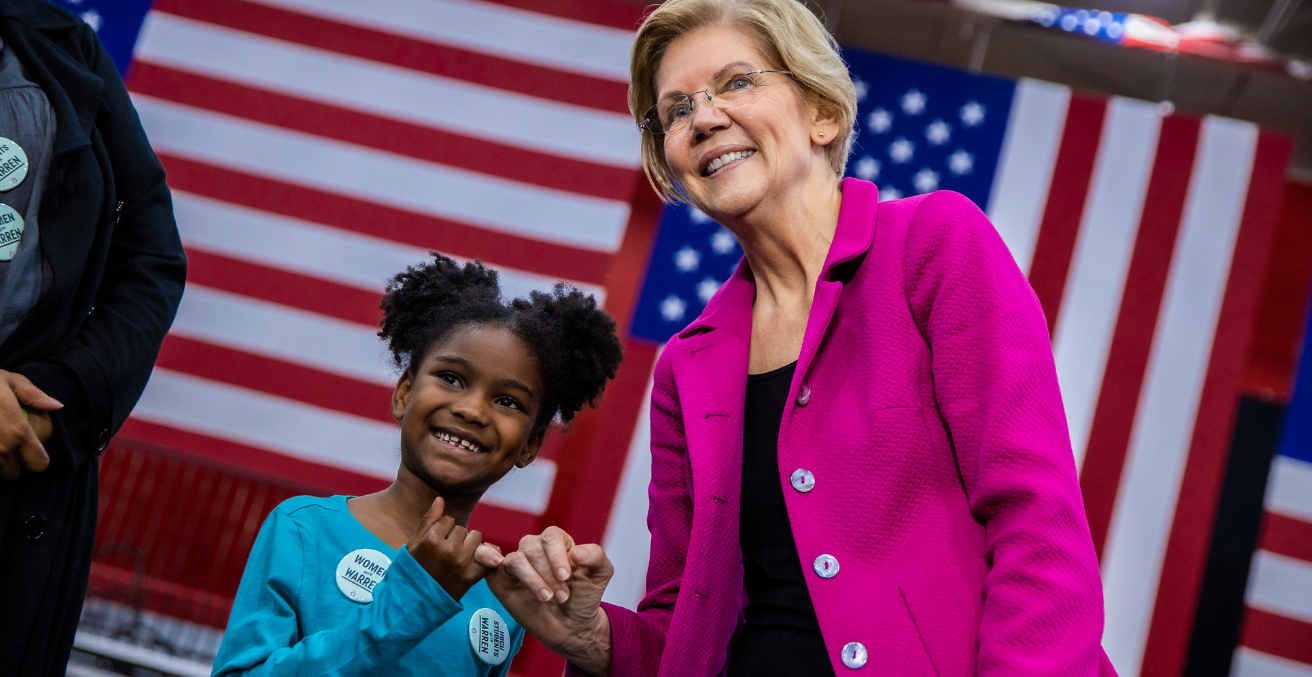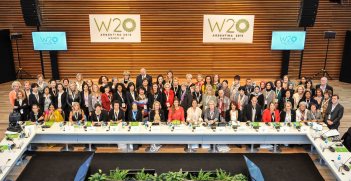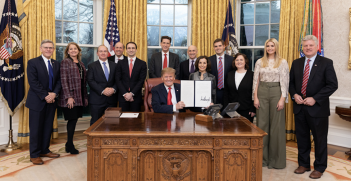Why I Voted for Elizabeth Warren

Elizabeth Warren’s bid for the Democratic presidential nomination pitted her against three reasonably qualified male candidates. With an end goal to oust President Trump, “electability” narratives have all but obscured the gender dynamics at play.
I cast a vote for Elizabeth Warren in California’s presidential primary on March 3. Like roughly 18 percent of California Democrats (and 39 percent of Democratic voters nationwide), I made my decision within days of voting. The proximity of International Women’s Day and the Super Tuesday presidential primary elections in the United States provided some much-needed clarity.
I did not enjoy my experience as an undecided voter, but I’m grateful for the insights it provided. I have greater empathy for residents of “swing states” (traditionally the likes of Ohio and Florida, currently the Rust Belt – Wisconsin, Michigan, etc. – and possibly even Texas). As a Californian, I’m used to having a “token” presidential vote – our 55 electoral votes have been decidedly blue for my entire lifetime. Democratic candidates come to California more to fundraise than to campaign, which creates a feeling that Californians are simply watching the elections from the sidelines. Coupled with the fact that a Californian’s vote for president counts for 1/711,724 of an electoral vote (compared to a 1/195,369 share in Wyoming), there is a certain level of apathy towards presidential elections, even amongst the politically minded.
For the first time since I turned 18, California held its primary elections on Super Tuesday, rather than in June when the nominee was all but decided (I was a few months too young in February 2008 to vote in the more-contested presidential primary race between Barack Obama and Hillary Clinton). For the first time, there was a sense that my vote mattered.
A Plethora of Choice
“Electability” is a major buzzword of this campaign, for which the ultimate goal is to oust President Donald Trump. With all notions of electability seemingly thrown out the window in the last election cycle, the variables at play are murky at best. In selecting a candidate, my top concern was a classic first-past-the-post conundrum: would a vote from the heart for a less popular candidate disadvantage another, more electable candidate, eventually leaving an overall less electable candidate to take on Trump in November?
The Democratic primary campaign began late last year with a swollen field of 29 candidates, the vast majority of whom were unelectable from the outset. Some were meme-worthy and endearing, like Marianne Williamson. Some made impressions with their outspokenness on key issues, such as Beto O’Rourke on immigration, Kamala Harris on racial injustice, and Andrew Yang on universal basic income. Many, however, were largely forgettable, like John Hickenlooper and Jay Inslee.
Debates (all ten of them, so far) brought the divisions within the Democratic Party to the fore, particularly surrounding Medicare for All and illegal immigration. But apart from the diversity of issue positions on offer, the debates, especially the first few, showed the most diverse field of presidential candidates in history.
Yes, the field was still predominantly white and male, but amongst the 29 candidates were six women, five people of colour, and the first openly gay Democratic presidential candidate. For a major party who, in the previous two election cycles, fielded the first Black man and the first woman to run for president, an older, white man becoming the nominee seemed unlikely early on.
Of the 45 US presidents, all have been male, and 44 have been white. Given reasonable alternatives, a contribution, in the form of a vote, to continuing the trend of old, white men leading the United States seemed antiquated.
An abrupt departure
By the Iowa caucus on February 29, the field of candidates had been significantly whittled down – but the women were hanging in there. Warren, Amy Klobuchar, and Tulsi Gabbard were among the eleven contenders. Warren and Pete Buttigieg did particularly well in the first few primaries, and Klobuchar picked up a handful of delegates. As Super Tuesday approached, I grappled with which of those three candidates “needed” my vote the most.
While Buttigieg and Klobuchar were well-known for not liking one another, these two candidates were quite similar. Both were moderate Democrats who emphasised pragmatic policies, on the younger end of the spectrum, from the Midwest, and of limited appeal to voters of colour. A vote for one would disadvantage the other, and worse, might possibly grant an advantage to the seemingly least electable moderate candidate, Joe Biden (clearly, things have changed). Klobuchar and Buttigieg did the electoral math. They knew that votes for them could also be votes for Biden, giving an advantage to Bernie Sanders, and even potentially to Trump.
On March 1, less than 48 hours before voters were set to go to the polls for the Super Tuesday primaries, Pete Buttigieg abruptly cancelled a rally in Alabama and announced plans to return to his hometown of South Bend, Indiana. A few hours later, he took to the stage to announce the end of his presidential campaign. The next morning, Amy Klobuchar made a similar announcement. Voters were left reeling.
“I’m running for president because that’s what girls do”
With a day to decide and choices effectively narrowed to three old, white men and a woman (and with Sanders polling at a comfortable lead in California), considerations of electability suddenly seemed moot. The proximity of International Women’s Day on March 8 to Super Tuesday provided an opportunity to consider the election within the broader context of women’s rights. As a woman faced with a choice of four reasonably qualified candidates, suddenly it seemed that I would be doing a disservice to women everywhere if I did not cast a vote for a woman for president.
The women have certainly faced a tougher path in this race. Referring to Buttigieg, Klobuchar noted that she, Warren, and Harris “wouldn’t be able to run for the president if we hadn’t had jobs like that or been experienced in many different ways.” This was an indirect nod to the male privilege inherent in Buttigieg’s level of stardom relative to his political experience. Unlike her male rivals, Warren was aware that for her campaign promises to be taken seriously, she needed to back them up with clear policy plans.
At campaign events, young girls lined up to make a pinkie promise with Warren. She would tell them, “I’m running for president because that’s what girls do.” Recent presidential contests have created a tangible possibility for a woman to assume the top position. And yet, this reality continues to be frustratingly out of reach.
A key point in Warren’s withdrawal speech was her disappointment and frustration that all those girls she had made pinkie promises to would have to wait another four years to see a woman have a shot at the presidency. For now, I will enthusiastically support whoever secures the Democratic nomination. However, given the structural injustices faced by Americans in broad swathes of society and in a time when representation is an increasingly dominant (and necessary) feature of media discourse, it would be unwise for Joe Biden or Bernie Sanders to select a white man as his running mate in November.
Nancy Schneider is the editor of Australian Outlook. She completed a Masters of International Relations with honours from the Australian National University with a thesis on the factors affecting the level of policy attention granted to global health issues, particularly noncommunicable diseases.
This article is published under a Creative Commons Licence and may be republished with attribution.





